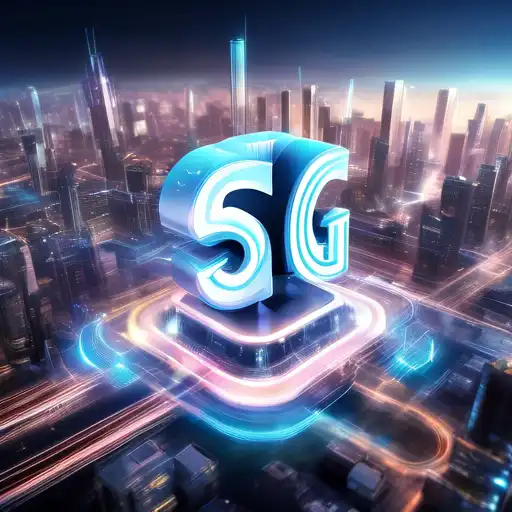The Dawn of 5G: Transforming Digital Connectivity with Lightning-Fast Speeds
In the ever-evolving landscape of digital technology, 5G stands out as a groundbreaking innovation, promising to revolutionize internet speeds and connectivity. This next-generation wireless technology is not just an upgrade; it's a complete overhaul of how we connect to the internet, offering speeds that were unimaginable just a few years ago.
What is 5G Technology?
5G, or fifth-generation wireless technology, is the latest iteration of cellular technology, engineered to greatly increase the speed and responsiveness of wireless networks. With 5G, data transmitted over wireless broadband connections can travel at rates as high as 20 Gbps by some estimates, exceeding wireline network speeds and offering latency of 1 ms or lower for uses that require real-time feedback.
How Does 5G Work?
5G operates on three different spectrum bands, each offering a unique mix of speed and coverage. The low-band spectrum offers wider coverage but speeds are only marginally better than 4G. The mid-band spectrum provides a balance between speed and coverage, while the high-band spectrum, also known as millimeter wave, offers the highest speeds but has limited coverage and struggles with obstacles like buildings and trees.
The Impact of 5G on Internet Speeds
The most immediate and noticeable benefit of 5G technology is the dramatic increase in internet speeds. This leap forward enables seamless streaming of ultra-high-definition videos, near-instantaneous downloads of large files, and smoother online gaming experiences. Beyond consumer benefits, 5G's speed and reliability are set to transform industries by enabling innovations like autonomous vehicles, smart cities, and advanced IoT applications.
5G and the Future of Connectivity
As 5G networks continue to roll out globally, the potential for transformative change across all sectors of society is immense. From healthcare to education, and from entertainment to manufacturing, 5G technology is paving the way for a future where digital connectivity is faster, more reliable, and more accessible than ever before.
Challenges and Considerations
Despite its many advantages, the deployment of 5G technology is not without challenges. Issues such as spectrum availability, infrastructure requirements, and security concerns must be addressed to fully realize the potential of 5G. However, with ongoing advancements and collaborations among stakeholders, these hurdles are gradually being overcome.
In conclusion, 5G technology is set to redefine the boundaries of internet connectivity, offering unprecedented speeds and opening up new possibilities for innovation and growth. As we stand on the brink of this new era, the future of digital connectivity looks brighter than ever.
